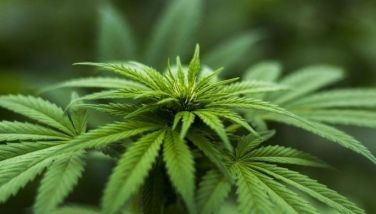Headway in management of rubber tree disease achieved
July 20, 2003 | 12:00am
KABACAN, North Cotabato – A significant headway has been achieved in efforts to manage Phytophthora disease, considered as one of the greatest threats to the country’s rubber industry.
The feat was achieved by Dr. Naomi G. Tangonan and Jasmin A. Pecho of the Philippine Rubber (PhilRubber) Research Center of the University of Southern Mindanao (USM) in this town.
Dr. Tangonan and Pecho are currently undertaking a research titled "Management of Phytophthora Diseases of Rubber in Mindanao" with funding from the Department of Agriculture-Bureau of Agricultural Research (DA-BAR).
The four-year (2001-2005) project aims to determine the incidence of diseases caused by Phytophthora on rubber in Mindanao; identify clones of rubber with resistance/tolerance to Phytophthora diseases; and formulate effective control strategy against Phytophthora diseases for recommendation to nursery operators and plantation growers.
Surveys on the incidence of Phytophthora diseases of rubber in Mindanao were conducted in 11 towns in Cotabato, five towns in Agusan del Sur, two in Sarangani, and one in Basilan.
Disease assessments, characterized into plantation and nursery, were done during the rainy months of 2001 (May-December), a period favoring germination of spores and resulting in heavy infection.
The major Phytophthora diseases were characterized by the following symptoms: seedling blight and shoot tip blight (at nursery stage), black stripe (a tapping panel disease), and splitting/cracking of the bark and/or collar part of the trees. All these diseases were caused by the same fungus Phytophthora palmivora.
Ten locally available fungicides were tested in the field for efficacy against black stripe. Of the fungicidal treatments, four (matalaxyl, oxadixyl, benomly, and mancozeb) were found effective on black stripe, whose incidence in some of the sites was 100 percent. The study covered 495 trees.
"These treatments may be applied alternately," Dr. Tangonan and Pecho said.
They further recommended that plantation and nursery surveys of other rubber-growing areas and producers in Bukidnon and Zamboanga should be done to assess the incidence and severity of Phytophthora diseases.
Moreover, different clones of rubber must be screened for resistance to these diseases to identify good clones for farmers’ use. – Rudy A. Fernandez
The feat was achieved by Dr. Naomi G. Tangonan and Jasmin A. Pecho of the Philippine Rubber (PhilRubber) Research Center of the University of Southern Mindanao (USM) in this town.
Dr. Tangonan and Pecho are currently undertaking a research titled "Management of Phytophthora Diseases of Rubber in Mindanao" with funding from the Department of Agriculture-Bureau of Agricultural Research (DA-BAR).
The four-year (2001-2005) project aims to determine the incidence of diseases caused by Phytophthora on rubber in Mindanao; identify clones of rubber with resistance/tolerance to Phytophthora diseases; and formulate effective control strategy against Phytophthora diseases for recommendation to nursery operators and plantation growers.
Surveys on the incidence of Phytophthora diseases of rubber in Mindanao were conducted in 11 towns in Cotabato, five towns in Agusan del Sur, two in Sarangani, and one in Basilan.
Disease assessments, characterized into plantation and nursery, were done during the rainy months of 2001 (May-December), a period favoring germination of spores and resulting in heavy infection.
The major Phytophthora diseases were characterized by the following symptoms: seedling blight and shoot tip blight (at nursery stage), black stripe (a tapping panel disease), and splitting/cracking of the bark and/or collar part of the trees. All these diseases were caused by the same fungus Phytophthora palmivora.
Ten locally available fungicides were tested in the field for efficacy against black stripe. Of the fungicidal treatments, four (matalaxyl, oxadixyl, benomly, and mancozeb) were found effective on black stripe, whose incidence in some of the sites was 100 percent. The study covered 495 trees.
"These treatments may be applied alternately," Dr. Tangonan and Pecho said.
They further recommended that plantation and nursery surveys of other rubber-growing areas and producers in Bukidnon and Zamboanga should be done to assess the incidence and severity of Phytophthora diseases.
Moreover, different clones of rubber must be screened for resistance to these diseases to identify good clones for farmers’ use. – Rudy A. Fernandez
BrandSpace Articles
<
>
- Latest
Latest
Latest
April 10, 2024 - 5:12pm
By Ian Laqui | April 10, 2024 - 5:12pm
March 4, 2024 - 3:32pm
By Ian Laqui | March 4, 2024 - 3:32pm
March 4, 2024 - 2:12pm
By Kristine Daguno-Bersamina | March 4, 2024 - 2:12pm
February 17, 2024 - 2:31pm
February 17, 2024 - 2:31pm
February 13, 2024 - 7:24pm
By Gaea Katreena Cabico | February 13, 2024 - 7:24pm
Recommended



























